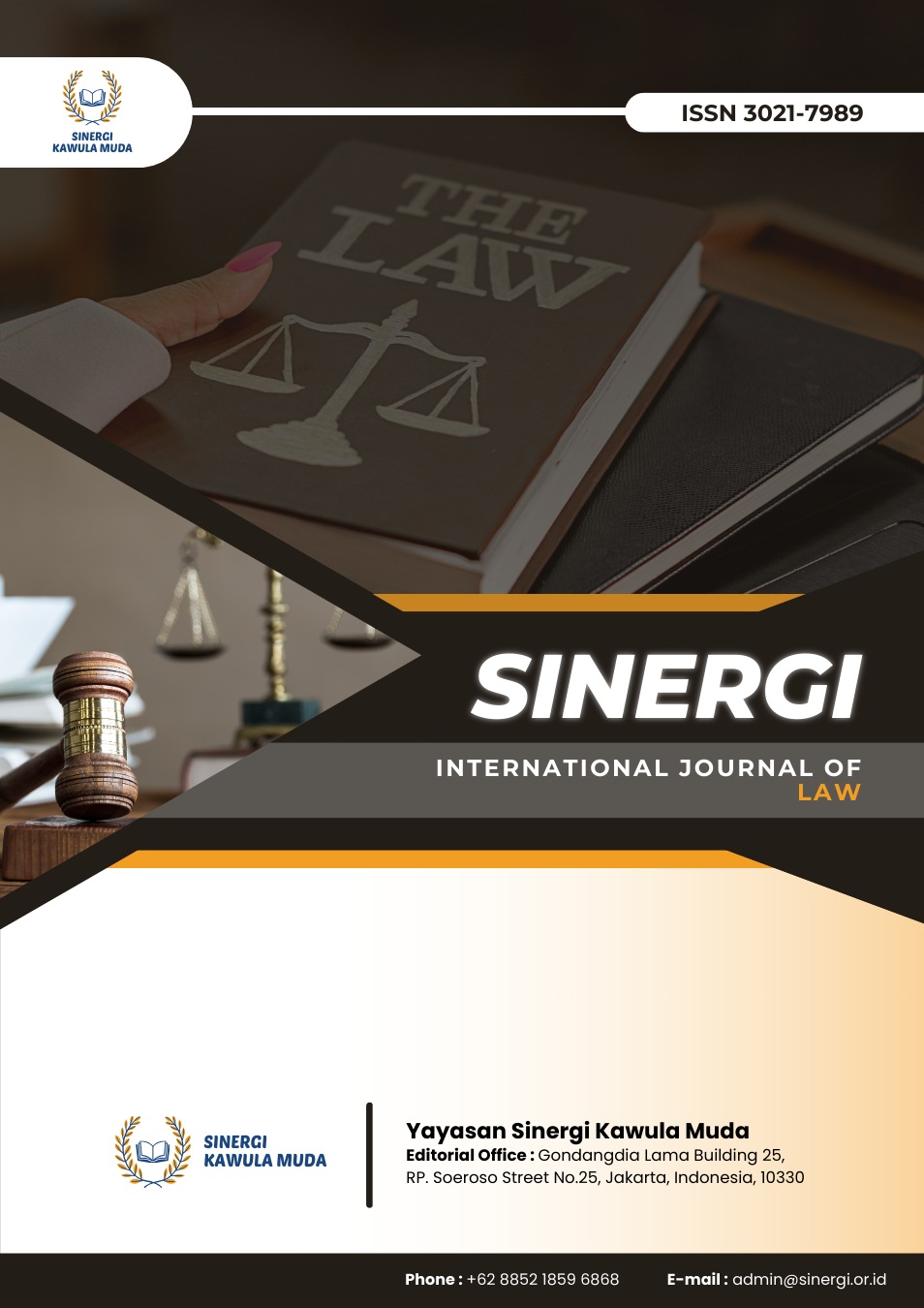Restorative Justice in Domestic Violence Cases: Law Implementation and Challenges in Indonesia
DOI:
https://doi.org/10.61194/law.v3i3.797Keywords:
Violence, Domestic, Restorative Justice, Victims' RightAbstract
Despite Law Number 23 of 2004, the problem of domestic violence (KDRT) remains unsolved. The majority of victims of domestic violence are women, and the retributive method of punishment is believed to be less effective in protecting them. The purpose of this research is to examine how well the restorative justice policy in Indonesia complies with current legislation and how it helps victims of domestic violence regain their rights. This study explores the possibility of adopting restorative justice through the use of normative legal research methodologies that take a legislative approach and conduct a literature review. By facilitating healing for victims and offenders and facilitating reconciliation, the study found that restorative justice could be a mnore compassionate alternative. But there are a lot of problems with putting it into practice, including the fact that police officers don't comprehend it and that mediators need training. Thus, in order to guarantee that restorative justice is effectively implemented, training is necessary for mediators as well as community and law enforcement outreach.
References
Amiruddin, & Asikin, H. Z. (2006). Introduction to Legal Research Methods, PT. Raja Grafindo Persada.
Aprita, S., & Adhitya, R. (2020). Philosophy of Law (1st ed.). Rajawali Press.
Atmasasmita, R. (1996). Criminal Justice System-Perspective of Existentialism and Abolitionism. Bina Cipta.
Center, L. D. (1994). Department of Education and Culture of the Republic of Indonesia. Balai Pustaka.
Hamzah, A. (2009). Criminal Law Terminology. Sinar Grafika.
Hernoko, A. Y. (2010). Contract Law (Principle of Proportionality in Commercial Contracts. Kencana. Maidin Gultom, Legal Protection of Children and Women.
Manan, B. (2008). Restorative Justice: An Introduction to the Book of Reflections on Legal Dynamics: A Series of Thoughts in the Last Decade. State Prnting Press of the Republic of Indonesia.
Mansyur, R. (2010). Penal Mediation for Domestic Violence Cases. Gema Yustisia Indonesia Foundation.
Marzuki, P. M. (2010). Legal Research. Kencana Prenada.
Muladi. (1995). Selected Chapters on the Criminal Justice System. BP Diponegoro University.
Pane, E. (2023). The Role of the Labuhanbatu District Attorney’s Office in Resolving Domestic Violence Crimes with a Restorative Justice Approach. Indonesia Berdaya, 4. 4. DOI: https://doi.org/10.47679/ib.2023579
Siregar, M. (2007). Practical Guidelines for the Protection of Legal Entities in Emergencies and Natural Disasters. Center for Child Protection and Studies (PKPA.
Soekanto, S., & Mamudji, S. (2014). Normative Legal Research: A Brief Review.
Soetejoe, W. (2007). Criminal Law of Children (4th ed.). Refika Aditama.
Supreme Court Dir. Gen. Decree No. 1691/2020-Guidelines on Restorative Justice
Waluyo, B. (2016). Law Enforcement in Indonesia. Sinar Grafika.
Attorney General Regulation No. 15/2020-Termination of Prosecution Based on Restorative Justice
Chief of Police Circular No. 8/2018-Restorative Justice in Criminal Case Resolution
Criminal Code (KUHP) No. 1/1946-Criminal Law
Criminal Procedure Code (KUHAP) No. 8/1981-Criminal Procedure Law
Law No. 11/2012-Juvenile Criminal Justice System
Law No. 21/2007-Eradication of Human Trafficking
Law No. 23/2004-Elimination of Domestic Violence
Law No. 39/1999-Human Rights
Presidential Decree No. 181/1998 jo. No. 65/2005-Establishment of the National Commission on Violence Against Women






